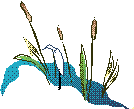|
Natural water bodies—both marine and fresh—are often high in biodiversity. Wetlands are particularly productive areas, photosynthesizing during all seasons and providing nursery space for young fish and shellfish. Marine habitats hold larger populations of different species than either freshwater or terrestrial environments. This may be explained by the massive area of the Earth covered by saltwater (biodiversity tends to increase with available area). Furthermore, life is believed to have first evolved in the ocean and has therefore had a longer time to differentiate there, despite periodic extinctions. Finally, there are areas in the ocean where species are able to exist in such radically extreme conditions (e.g., requiring sulfur-based respiration) that taxonomists have been challenged to classify them! |
Indicators of biodiversitySensors of all types are used to detect the presence of toxic compounds and environmental pollution in the world around us. However, many sensors are not portable, are generally expensive, and usually cannot tell us very much about the complex interactions between the pollutants and the natural world. Yet many living organisms that are present in our environment can act as “sensors” if we learn to read the signals they send us. When conditions in a body of water change, the communities of species that flourished under the original conditions often change, too. Each community, then, may be a “bioindicator” of the changing conditions. For example, species requiring high dissolved oxygen levels such as trout give way to carp as pollution is introduced, and more and more plants decompose, using up the available oxygen. |
 Aquatic Biodiversity and Bioindication
Aquatic Biodiversity and Bioindication